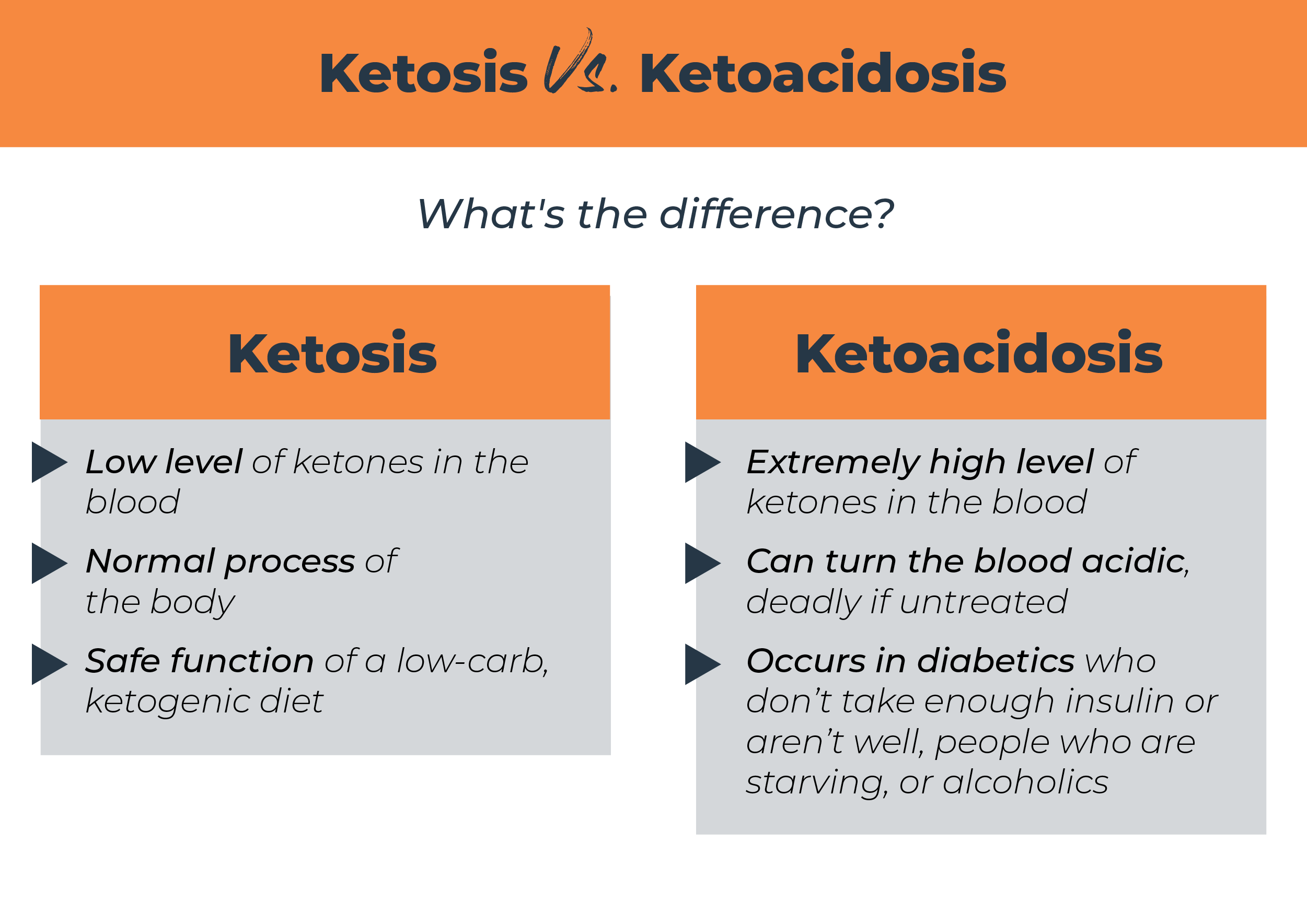When your body shifts from burning glucose to burning fat, ketone levels rise — a state called ketosis. This can cause noticeable changes in breath odor, appetite, and overall energy.
The ketogenic, or keto, diet is a widely used and effective approach for shedding pounds and enhancing health.
When done correctly, this low-carbohydrate, high-fat eating plan increases blood ketone concentrations. Ketones are metabolic byproducts that serve as an alternative energy source for your cells and largely account for the distinctive health effects of keto.
Adopting a keto diet triggers many physiological changes, including lower insulin and increased fat breakdown (, 4).
As this occurs, the liver ramps up ketone production to fuel the brain. Still, it’s not always obvious whether you’ve reached ketosis.
The keto diet is not suitable for everyone — people with conditions like pancreatitis, liver failure, or disorders of fat metabolism should avoid it.
It’s also essential to distinguish ketosis from ketoacidosis, a dangerous complication that primarily affects people with diabetes.

Below are 10 typical signs and symptoms of ketosis, including both beneficial and adverse effects.
1. Bad breath
Many individuals following keto or similar plans (for example, the Atkins diet) notice their breath takes on a fruity or unusual scent.
Halitosis is a frequent consequence of entering full ketosis.
Higher ketone levels are behind the change in breath. The main offender is acetone, a ketone that is expelled in urine and exhaled air (6).
Although this scent can be inconvenient socially, it’s often a sign the diet is working. Brushing teeth more often or using sugar-free gum can help, and staying well-hydrated may reduce the odor.
When choosing gum or sugar-free beverages, inspect the nutrition facts for carbohydrates; these items can raise blood sugar and lower ketone production.
2. Weight loss
Keto and other low-carb approaches are effective for weight reduction, though one study noted that 8 participants withdrew due to safety concerns such as increased LDL cholesterol or higher creatinine levels (4, ).
Numerous trials indicate both rapid and sustained weight loss is possible after switching to keto (4, ).
Quick weight loss often happens in the first week and is mostly water rather than fat (4).
Following the initial water loss, continued fat reduction should occur as long as you adhere to the diet and maintain a calorie deficit.
3. Increased ketones in the blood
A key feature of keto is lower blood glucose and higher ketone concentrations.
As you become keto-adapted, your body shifts to burning fat and ketones as primary fuels.
The most trustworthy way to verify ketosis is by testing blood ketones with a dedicated meter — the method commonly used in research (9).
These devices measure beta-hydroxybutyrate (BHB) in the bloodstream, one of the principal ketones.
Experts often define nutritional ketosis as blood ketone concentrations of 0.5 millimolar (mM) or higher (10).
The downside is that this test requires a finger-prick blood sample.
Test strips and meters can also be costly, so many people test only weekly or biweekly.
4. Increased ketones in the breath
A breath analyzer is another option to estimate ketone levels.
These devices detect acetone, one of the three main ketone bodies present during ketosis (6).
Because more acetone is exhaled in nutritional ketosis, breath readings offer a sense of your ketone status.
Acetone breath analyzers have been shown to give reasonably accurate results, though they are generally less precise than blood measurements.
5. Appetite suppression
Many people experience reduced hunger when following a keto regimen.
The exact causes are still being explored.
It’s been proposed that appetite suppression may stem from changes in hunger hormones and a higher protein intake (, 14).
Ketones themselves might also influence brain centers that regulate hunger, contributing to lower appetite (14) (15).
6. Increased focus and energy
When starting a very low-carb diet, people often feel foggy, fatigued, and unwell — symptoms commonly called the “low carb flu” or “keto flu” (16).
Long-term keto followers, however, frequently report enhanced mental clarity and energy.
Switching fuels requires your body to adapt from relying on carbohydrates to burning more fat.
Once in ketosis, much of the brain starts using ketones instead of glucose, a transition that can take days to weeks to stabilize (17).
Ketones are a highly efficient energy source for the brain and have even been studied therapeutically for conditions like concussion and cognitive decline (18, 19, 20, 21).
Cutting carbs can also stabilize blood glucose, which may further support cognitive function and concentration (22, ).
7. Short-term fatigue
The early phase of adopting a keto diet is often the toughest. Common early side effects include weakness and low energy (16).
Such symptoms cause many people to abandon the diet before they reach full ketosis and benefit from long-term effects.
These reactions are normal. After years of depending on carbohydrate fuels, the body needs time to switch systems.
As expected, the transition isn’t instantaneous.
To ease fatigue during this period, consider electrolyte supplements, but check labels for added carbohydrates.
Electrolyte loss is common due to rapid reductions in body water (4).
If supplementing, include sodium, potassium, and magnesium.
8. Short-term decreases in performance
As noted, cutting carbs can initially lead to general tiredness and a temporary drop in exercise capacity.
This is mostly driven by reduced muscle glycogen stores, which are the preferred and most efficient fuel for high-intensity activities.
After several weeks, many keto followers find their performance rebounds. In some ultra-endurance cases, keto may even offer advantages.
Another benefit is an increased capacity to burn fat during workouts.
One small, notable study found athletes on keto burned up to 230% more fat during exercise than non-keto athletes (25).
While keto may not optimize performance for elite competitors, once fat-adapted it is typically adequate for regular exercise and recreational sports (26).
9. Digestive issues
The keto diet usually involves a substantial shift in the foods you eat.
Common digestive complaints during the initial phase include constipation and diarrhea (17).
Many of these problems resolve after the adjustment period, but it’s wise to identify any specific foods that trigger symptoms.
Eat plenty of low-carb vegetables that still provide fiber.
Most importantly, avoid an overly narrow food selection. A lack of variety can raise your risk of digestive troubles and nutrient shortfalls.
10. Insomnia
Sleep disturbances are a common complaint among people starting keto, particularly during the early weeks (17).
Many report trouble falling asleep or waking at night after steeply cutting carbs.
Usually, these sleep issues improve within a few weeks.
Long-term keto adherents often say their sleep quality improves once they are adapted (27).
The bottom line
There are several clear signs that can help you determine if you’re in ketosis.
If you follow keto guidelines consistently, you’re likely to reach some degree of ketosis.
For a more precise read, test ketone levels in blood or breath weekly and consult a healthcare professional before beginning keto, since it’s unsafe for people with certain medical conditions.
Ultimately, if you’re losing weight, enjoying the way you eat, and feeling healthier, there’s usually no need to obsess over ketone numbers.


















Leave a Reply
You must be logged in to post a comment.